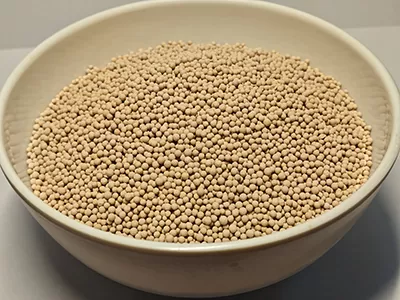molecular sieve exhibits broad adsorption capabilities, tailored by its pore structure and chemical properties. Water is a primary target: hydrophilic sieves (e.g., 3A, 4A) with small pores (3–5 angstroms) strongly attract water molecules, making them ideal for drying gases, solvents, and fuels. Their affinity for polar molecules ensures efficient moisture removal even at low humidity.

Gases like CO₂, O₂, and H₂S are also adsorbed selectively. 13X molecular sieve, with larger pores (10 angstroms), captures CO₂ in natural gas purification, while carbon molecular sieve separates O₂ from air for nitrogen production. This selectivity arises from pore size—matching gas molecule dimensions—and surface interactions, such as electrostatic attraction to polar gases.
Organic compounds, including alcohols, hydrocarbons, and aromatics, are adsorbed by hydrophobic sieves. For example, 5A sieve separates linear hydrocarbons in petroleum refining, while zeolite-based sieves remove volatile organic compounds (VOCs) from industrial exhausts. The packing of molecular sieve in columns maximizes contact, ensuring thorough adsorption of these compounds.
Specialized sieves extend this range: lithium molecular sieve targets CO₂ in flue gases, and chiral sieves adsorb specific enantiomers in pharmaceuticals. This versatility, combined with regenerability, makes molecular sieve indispensable in drying, separation, and purification across industries.

